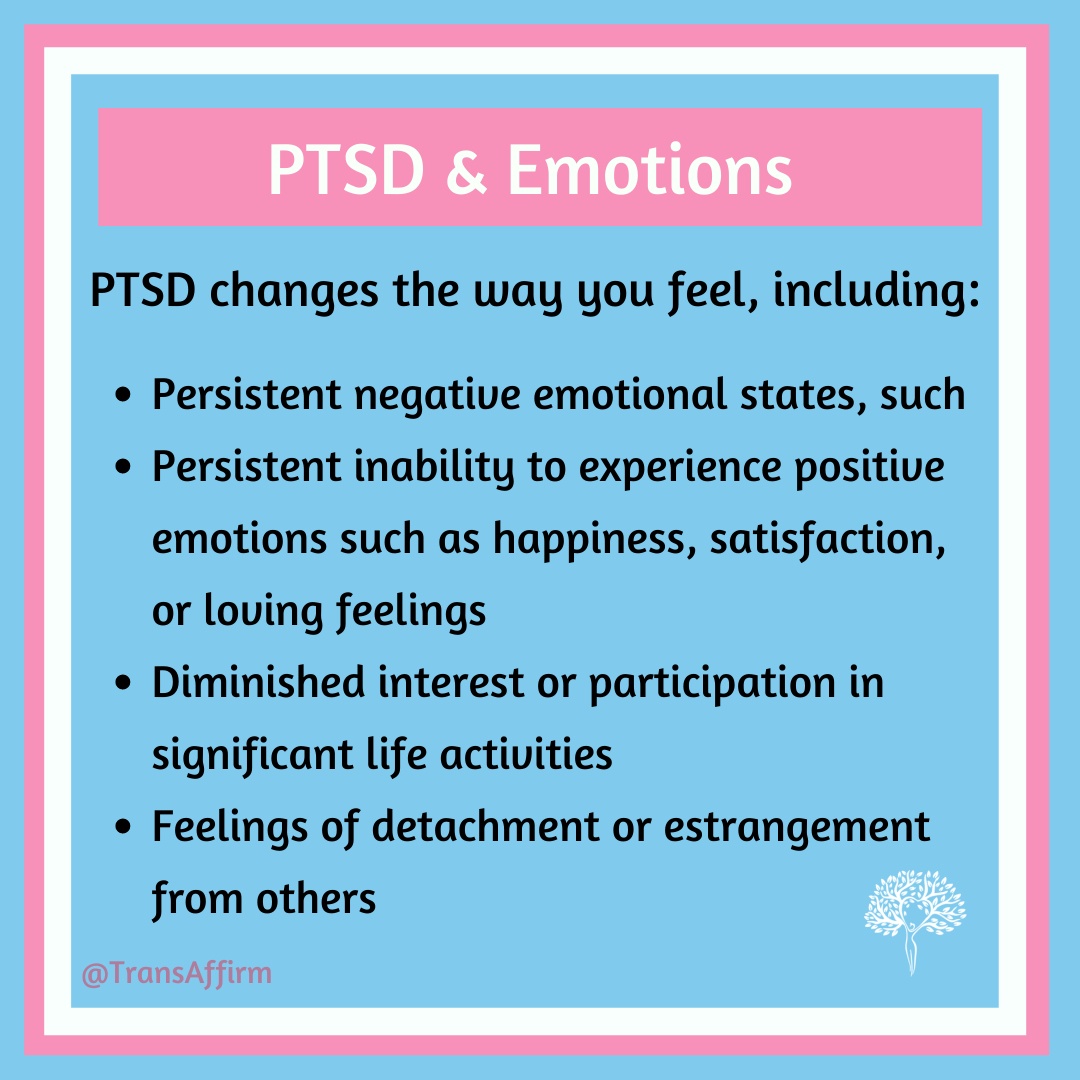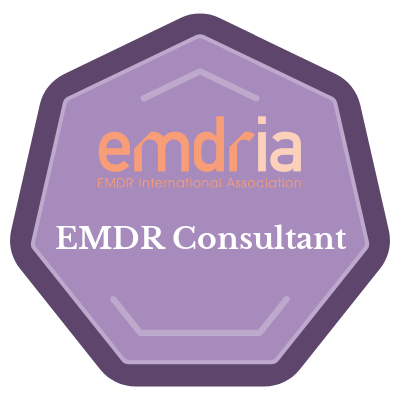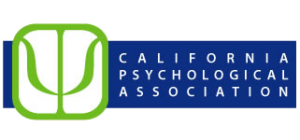PTSD and Feelings

As I noted earlier, according to the DSM 5, PTSD can develop if you go through a traumatic event, if you witness a traumatic, learning of a traumatic event happening to a close family member or friend, or repeated exposure to traumatic events (ex. first responders).
One symptom category includes negative changes a person’s feelings and emotions, including:
They may have persistent negative emotional states, such as fear, horror, anger, guilt, or shame. This is a change from how they used to be or it is more intense/noticeable.
In addition, there may also be a persistent inability to experience positive emotions such as happiness, satisfaction, or loving feelings. This does not mean that the person can never feel these things, but that it is more difficult and the feelings don’t seem to persist.
As you can imagine, this can have a profound negative impact on social relationships and life satisfaction. That is why another frequent symptom is diminished interest or participation in significant life activities; or feelings of detachment or estrangement from others.
These changes to emotions and social functioning can frequently lead to unhealthy ways of managing the negative or chasing the positive emotions such as substance use/abuse or other high-risk behaviors.
These changes can also lead to a profound sense of isolation from others.
It is important to know that these feeling states can be changed and shifted without the use of drugs and alcohol, and may benefit from psychiatric medications to help manage or ameliorate.
And of course therapy is often a vital and integral part of healing. These symptoms do not have to be crippling nor do they have to last forever, help is out there.










